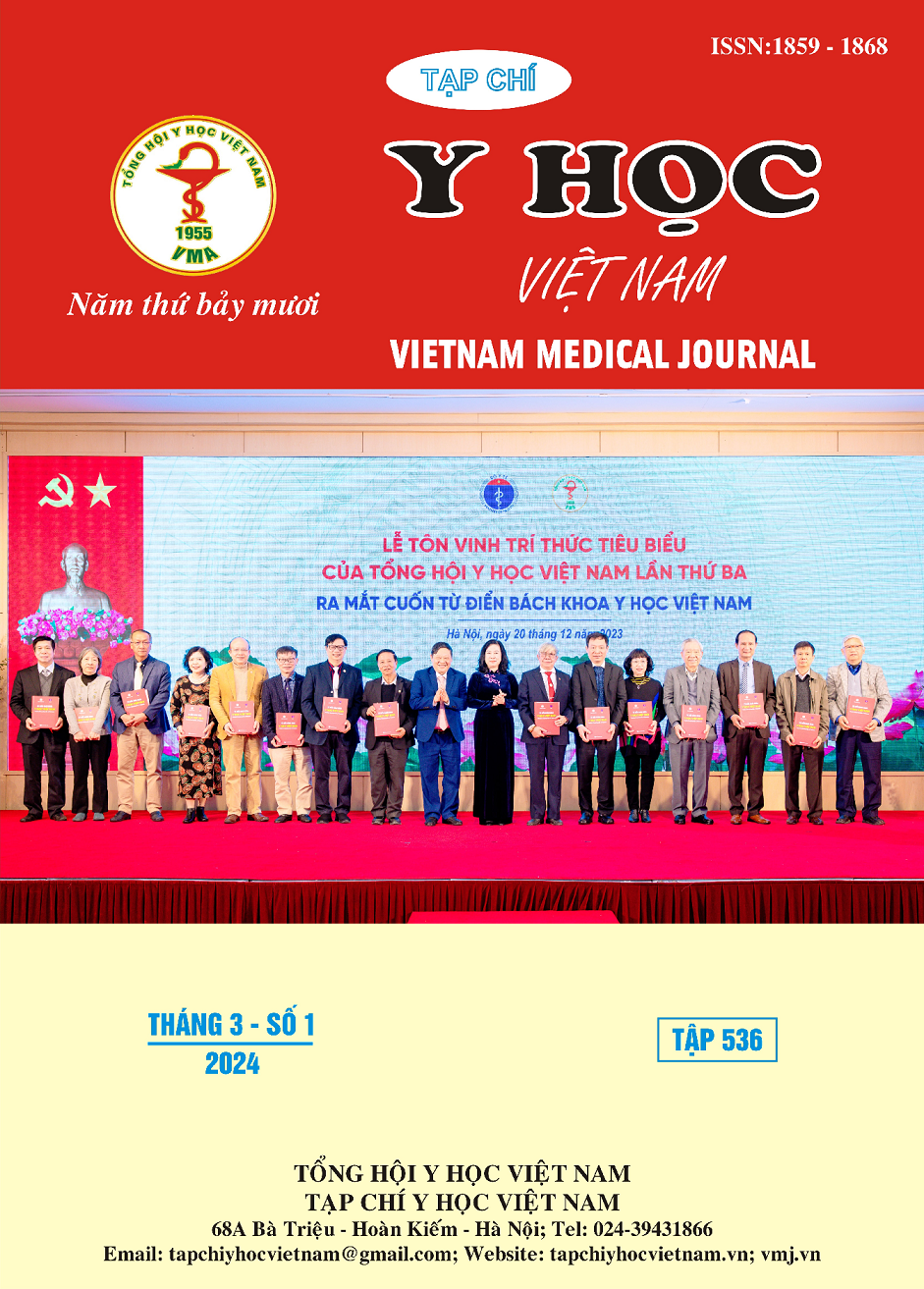COMPARISON OF SOME HEMODYNAMIC INDICATORS MEASURED BY IMPEDANCE CARDIOGRAPHY (ICG) AND PICCO IN SEPTIC SHOCK PATIENTS AT BACH MAI HOSPITAL
Main Article Content
Abstract
Objective: To analysis the correlation and aggrement of several hemodynamic parameters measured by the impedance cardiography (ICG) with corresponding parameters mesured by (PICCO) in septic shock patients at Bach Mai Hospital. Method: A prospective descriptive study on 32 patients with septic shock. Patients were measured hemodynamic parameters by the impedance cardiography (ICG) and PICCO at the same time. Study was carried out from November 2022 to November 2023 at the ICU and A9 Emergency Center - Bach Mai Hospital. Results: 32 patients were studied included 20 male patients (62,5%), and 12 female patients (37,5%), average age: 59.6 ± 19.76 years. The main cause of septic shock was pneumonia (50%), followed by gastrointestinal infections (25%) and cellulitis (9.4%), 56.7% of patients had chronic diseases and 66.7% of patients myocardial failure. The CI and SVRI indexes obtained in both methods are similar with the percentage of error (PE) being 27.9%, 30%, respectively, and a strong, statistically significant correlation throughout the study with the coefficient The correlations were r = 0.78 and r = 0.81, respectively, with p < 0.01. SVV index had a percentage error (PE) of 62.5% and correlation coefficient r = 0.84. Conclusion: The similarity and correlation of CI and SVRI measured between the two methods ICG and PICCO were acceptable in clinical practice, they can be used interchangeably to measure CI and SVRI. SVV measured from the two methods was less similar.
Article Details
References
2. Surviving Sepsis Campaign Guidelines 2021
3. Continuous cardiac output by femoral arterial thermodilution calibrated pulse contour analysis: comparison with pulmonary arterial thermodilution Goedje, K Hoeke M Lichtwarck-Aschoff. A Faltchauser P Lamm, B Reichart 1999
4. Bernstein DP, Lemmens H. Stroke volume equation for impedance cardiography. Med Bio Eng Comput. 2005;43(4):443–450
5. Nguyễn Hữu Quân. Nghiên cứu hiệu quả huyết động với sự hỗ trợ của phương pháp PiCCO trong xử trí sốc nhiễm khuẩn. Luận án Tiến sĩ, Đại học Y Hà Nội, 2016
6. Rajput, R., Das, S., Chauhan, S., Bisoi, A. and Vasdev, S. (2014). Comparison of Cardiac Output Measurement by Noninvasive Method with Electrical Cardiometry and Invasive Method with Thermodilution Technique in Patients Undergoing Coronary Artery Bypass Grafting. World Journal of Cardiovascular Surgery, 4, 123-130.
7. Malik, V., Subramanian, A., Chauhan, S. and Hote, M. (2014). Correlation of Electric Cardiometry and Continuous Thermodilution Cardiac Output Monitoring Systems. World Journal of Cardiovascular Surgery, 4, 101-108.
8. Heringlake, M., Handke, U., Hanke, T., Eberhardt, F., Schumacher, J., Gehring, H. and Heinze, H. (2007) Lack of Agreement between Thermodilution and Electrical Velocimetry Cardiac Output Measurements. Intensive Care Medicine, 33, 2168-2172
9. Ovsyshcher I, Zimlichman R, Katz A, Bondy MC, Furman S. Measurements of cardiac output by impedance cardiography in pacemaker patients at rest: effects of various atrioventricular delays. J Am Coll Cardiol 1993;21(3):761-767


